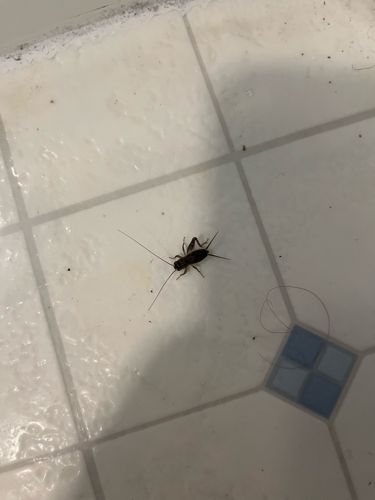House Cricket
Scientific Name: Acheta domesticus
Order & Family: Order: Orthoptera, Family: Gryllidae
Size: Adults typically measure between 16 to 21 mm (0.6 to 0.8 inches) in length, excluding their antennae and ovipositor (in females), which can be longer.

Natural Habitat
House crickets originated from Southwest Asia but are now found worldwide, especially in urban and suburban areas. They prefer warm, humid environments and are often found indoors in basements, crawl spaces, kitchens, bathrooms, and around furnaces and water heaters, especially during colder months. Outdoors, they inhabit gardens, garbage dumps, and open fields.
Diet & Feeding
They are omnivorous scavengers. Their diet includes a wide range of organic materials such as decaying plant matter, fungi, other insects (dead or alive), fabric, paper, and food scraps found in human dwellings. They can also feed on fruits, vegetables, and grains.
Behavior Patterns
House crickets are nocturnal, meaning they are most active at night. Males are known for their distinctive chirping sounds, produced by rubbing their forewings together, primarily to attract females and ward off other males. They are sensitive to light and prefer dark, damp environments. They can jump and run quickly.
Risks & Benefits
While generally harmless to humans, house crickets can be a nuisance due to their loud chirping, especially at night. They can cause minor damage to fabrics, paper products, and plants when present in large numbers. They are not known to transmit diseases to humans. From an ecological perspective, they serve as a food source for various predators (birds, small mammals, other insects) and contribute to the decomposition of organic matter. They are also widely bred as pet food.
Identified on: 8/9/2025